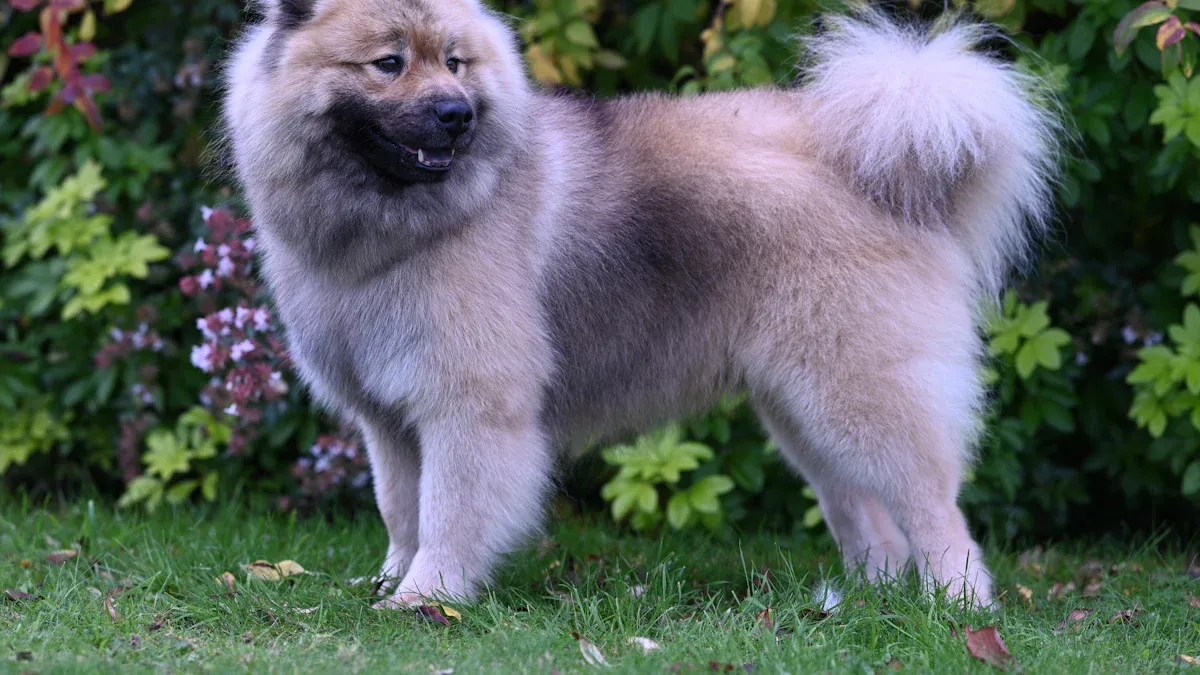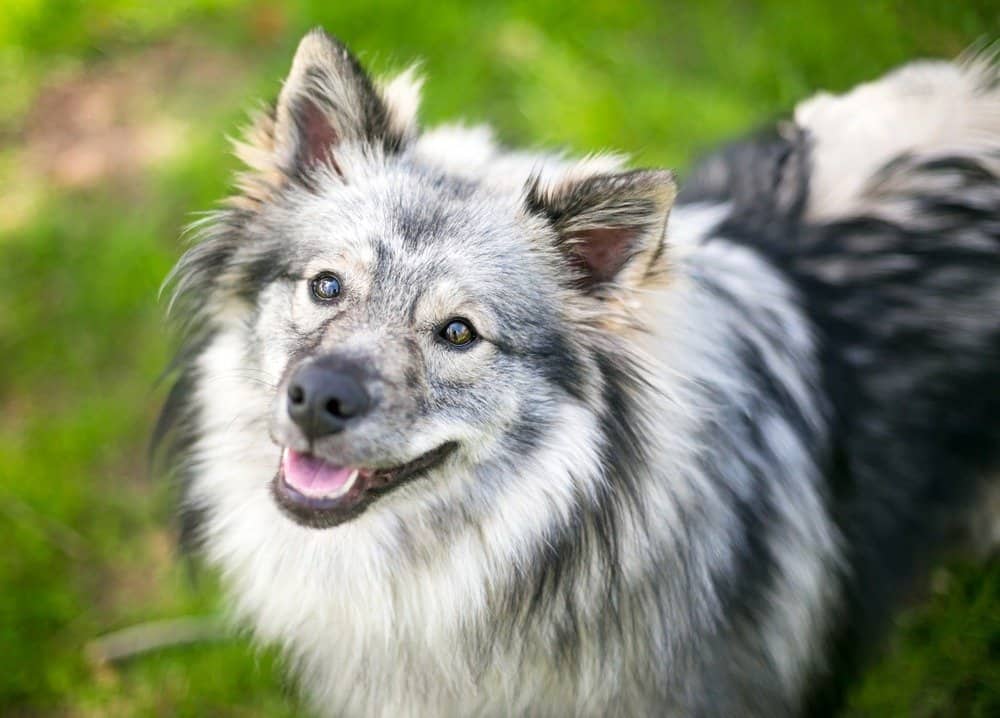With their fluffy double coats, expressive dark eyes, and perpetual “smiling” faces, Keeshonds (often called “Dutch Barge Dogs”) are hard to resist. These medium-sized Spitz breeds are known for their friendliness, intelligence, and unwavering loyalty to their families. But for new and potential Keeshond owners, one question looms large: How much exercise do Keeshonds need? The answer lies in balancing their moderate physical energy with their intense need for mental stimulation and human connection—two factors that are often overlooked in traditional exercise plans.
Bred to be companion dogs on Dutch canal barges, Keeshonds evolved to stay active alongside their owners, whether it was patrolling the boat, keeping watch, or simply cuddling after a day’s work. This heritage means they’re not hyperactive like Border Collies, nor are they couch potatoes like Bulldogs. Instead, they thrive on consistent, engaging activity that combines movement with bonding. The challenge? Modern lifestyles—busy schedules, bad weather, or limited outdoor space—can make it hard to meet this balance. This is where treadmills for dogs for sale become a game-changer. Unlike for high-energy breeds that need speed or giant breeds that need low-impact movement, Keeshonds benefit from dogs running machines as a way to blend physical exercise with mental interaction—turning a solo workout into a shared experience. Let’s break down Keeshonds’ exercise needs, why traditional methods fall short, and how the right treadmill can enhance their health and happiness.
The Truth About Keeshonds’ Exercise Needs: Moderate Energy, High Engagement

To understand how much exercise a Keeshond needs, you have to look beyond “minutes per day” and focus on quality over quantity. Keeshonds are medium-energy dogs, but their exercise requirements are uniquely tied to their social and intellectual needs. Here’s what you need to know:
How Much Physical Activity Do They Need?
On average, adult Keeshonds require 45–60 minutes of daily physical activity, split into 2–3 sessions. This could include a brisk walk around the neighborhood, a game of fetch in the park, or a short hike. Puppies (6–12 months) need slightly more—60–75 minutes daily—but with frequent breaks to protect their growing joints. Seniors (8+ years) can scale back to 30–45 minutes of gentle movement, like slow walks or light play.
But here’s the catch: physical activity alone isn’t enough. Keeshonds are highly intelligent and social; they get bored easily with mindless exercise. A 30-minute walk where you stare at your phone won’t satisfy them—they need interaction, training, or mental challenges to feel fulfilled. For example, a 20-minute walk combined with 10 minutes of obedience training (teaching “sit,” “stay,” or new tricks) is far more effective than a 30-minute solo stroll.
Why Mental Stimulation Is Non-Negotiable
Keeshonds were bred to be “thinking companions”—they needed to alert their owners to changes on the barge and adapt to new environments. This intelligence means they crave mental work as much as physical movement. Without it, they can develop unwanted behaviors:
-
Destructive chewing: Biting shoes, furniture, or toys out of boredom.
-
Excessive barking: Vocalizing to release pent-up mental energy.
-
Anxiety: Pacing, trembling, or separation anxiety from feeling unfulfilled.
Mental stimulation can take many forms: puzzle toys stuffed with treats, scent work (hiding toys around the house), or even helping with small tasks (carrying a toy to the couch). The key is to keep their brains active alongside their bodies.
Why Traditional Exercise Often Fails Keeshonds

Many Keeshond owners try to meet their pup’s needs with common methods—daily walks, backyard play, or dog park visits—but these often miss the mark. Here’s why:
Walks Alone Lack Engagement
Daily walks are important for your Keeshond. But they often do not give the mental challenge these dogs need. Just walking around the block can get boring. Keeshonds love variety and fun activities. If you see your dog walking slowly or stopping often, it may mean they are bored. Dogs with osteoarthritis might show these signs too. This can mean they are uncomfortable or uninterested. To meet your Keeshond's exercise needs, try changing your walking routes or adding fun activities during walks.
Backyard Play Is Unstructured (and Lonely)
Playing in the backyard seems like a good idea. But it often lacks the fun and interaction Keeshonds need. When left alone outside, your dog may feel lonely. They might chase a ball for a while, but without you, the fun can fade. Keeshonds are social dogs that enjoy being with people. Instead of letting them play alone, join in! Play games like fetch or tug-of-war to keep them happy. This gives them exercise and helps you bond.
Dog Parks Are Hit-or-Miss
Dog parks can be good or bad for Keeshonds. They let your dog run and play freely, which is great for their health. Playing with other dogs can keep them mentally active and less bored. But not every visit will go well. Some parks can be too crowded or have aggressive dogs. This can stress your Keeshond. Always watch how your dog acts and pick parks that fit their personality. Remember, socializing helps Keeshonds learn skills and gain confidence.
Busy Schedules Disrupt Consistency
Life can be busy, and this can make it hard to give your Keeshond regular exercise. If routines are not consistent, your dog may start to bark too much, chew things, or dig. Without enough exercise, your Keeshond might gain weight and act out. To fix this, try to create a routine that works for you. Even short play sessions during the day can help. Think about taking walks or playing during your lunch break or after work to give them the attention they need.
Adding structured activities to your Keeshond's routine is very important. Here are some fun ideas:
-
Daily Walks: Try for at least 30 minutes at a steady pace.
-
Playtime at Home: Play fetch, tug-of-war, or use interactive toys.
-
Outdoor Adventures: Go hiking or swimming in new places.
-
Mental Stimulation: Use puzzle toys, training, or scent games to keep their minds active.
By focusing on both physical and mental exercise, you can help your Keeshond live a happier and healthier life.
How Treadmills for Dogs for Sale Solve Keeshonds’ Unique Needs

A treadmill for dogs isn’t just a “backup” for bad weather—it’s a tool that’s uniquely suited to Keeshonds’ need for engaged, consistent activity. Unlike for other breeds where treadmills are used for speed or endurance, Keeshonds benefit from treadmills as a way to blend physical movement with mental interaction. Here’s why treadmills for dogs for sale are a smart choice:
Turns Solo Exercise Into a Shared Experience
Treadmills for dogs can change your Keeshond's exercise time into a fun time together. You can use the treadmill inside, especially on hot or rainy days. This keeps both you and your dog safe while being active. While your Keeshond walks or runs, you can teach them new tricks or practice obedience. This shared time keeps you both involved and makes your bond stronger.
Customizable to Their Energy (and Mood)
Every Keeshond has a different energy level and mood. A treadmill with adjustable incline makes it easy to adapt to your dog's needs. If your Keeshond is feeling energetic, you can increase the incline. When they're tired, you can lower the incline. This flexibility helps keep your dog engaged in exercise.
Combines Physical Movement With Mental Stimulation
Using a treadmill gives your Keeshond physical exercise and mental engagement. You can add commands or tricks while they walk, turning their workout into training time. This mix of physical and mental activity keeps your dog sharp and happy.
Weather-Proof = Consistent Routine
With treadmills, you can keep a regular exercise routine no matter the weather. Rain or snow won’t stop your Keeshond's workout. You can create a steady running space indoors, making sure your dog gets the exercise they need every day. This regularity is important for their overall health.
Gentle on Joints (Perfect for All Ages)
Treadmills are made to be easy on your Keeshond's joints. Here’s how they help:
|
Benefit |
Explanation |
|---|---|
|
Prevents injuries |
Shock absorption lowers the risk of sprains, strains, and long-term joint damage. |
|
Supports natural movement |
Keeps a dog's natural gait, preventing stress on muscles and ligaments. |
|
Reduces impact forces |
Good cushioning absorbs shocks, lowering strain on joints. |
|
Extends training longevity |
Low-impact exercise is good for older dogs and breeds with joint problems. |
|
Ensures balanced muscle development |
Stops uneven stress on the body, which can cause future issues. |
|
Enhances user experience |
Dogs feel more comfortable and willing to exercise. |
|
Encourages long-term activity |
A positive training time keeps dogs motivated and supports a healthy lifestyle. |
With these benefits, treadmills for dogs are a great choice for Keeshonds of all ages, helping them stay active and healthy.
So, how much exercise do Keeshonds need? 45–60 minutes of daily activity—but with a twist: it needs to be engaging, social, and mentally stimulating. Traditional exercise methods often fail to meet this balance, but treadmills for dogs for sale fill the gap. They turn solo workouts into bonding time, let you customize the experience to your Keeshond’s mood, and ensure consistency even when life gets busy.
A treadmill isn’t just a piece of equipment—it’s an investment in your Keeshond’s well-being. It lets you meet their physical needs while nurturing their social and intellectual side, which is essential for their happiness. Whether you’re dealing with a busy schedule, bad weather, or a Keeshond who’s bored with regular walks, a treadmill can enhance their quality of life.
At the end of the day, Keeshonds just want to be with you. A treadmill lets you share even the smallest moments—like a morning workout—strengthening your bond while keeping them healthy. With the right exercise and care, your Keeshond will thrive, bringing their signature smile and loyalty to your home for years to come. If you’re browsing treadmills for dogs for sale, remember: the best treadmill is one that turns exercise into connection. 🐾

FAQ
How often should I exercise my Keeshond?
You need to exercise your Keeshond every day for 30 to 60 minutes. This keeps them healthy and happy.
What activities are best for Keeshonds?
Keeshonds like walks, fetch, agility training, and fun games that challenge their minds and bodies.
Can Keeshonds exercise indoors?
Yes! Treadmills for dogs or indoor play can give great exercise, especially when the weather is bad. 🐾










0 Comments